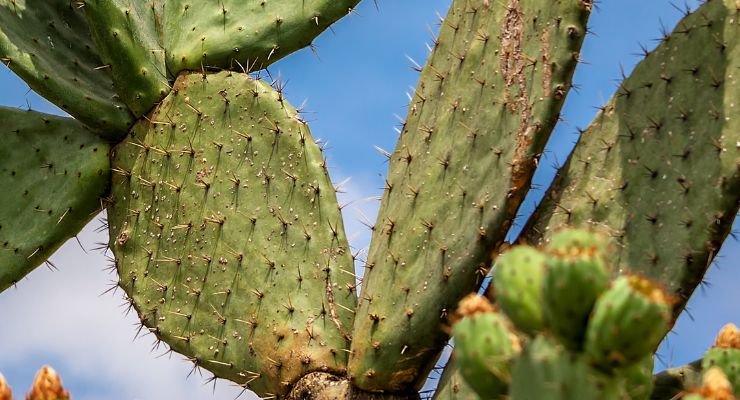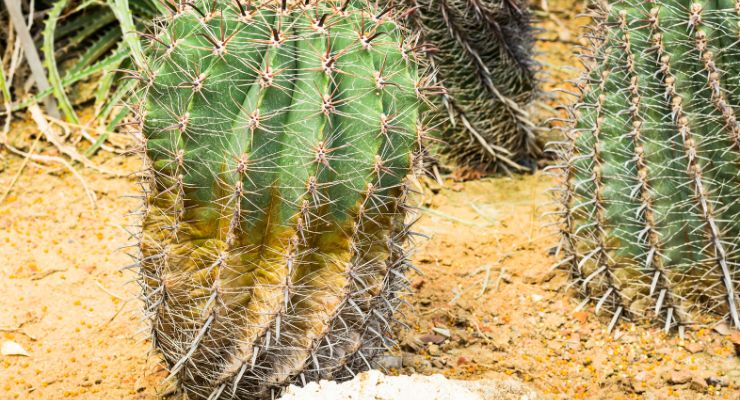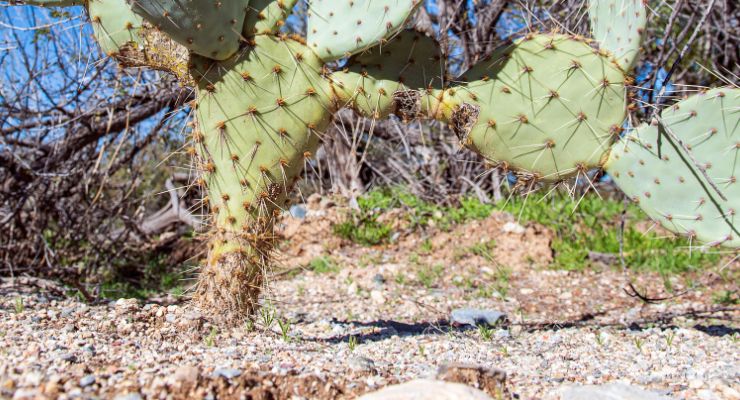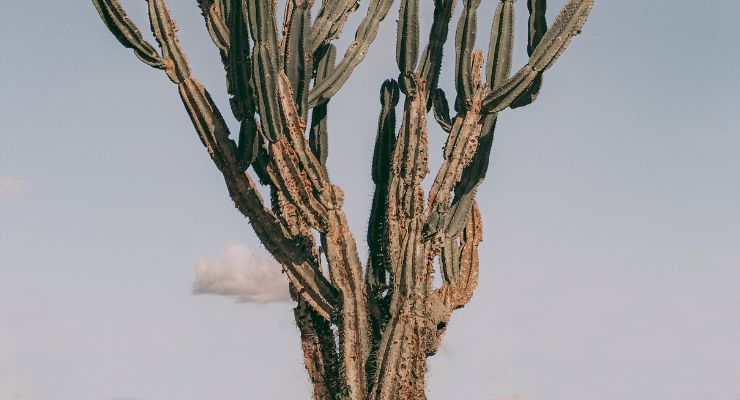Cactus corking is a unique adaptation mechanism that allows cactus plants to survive in harsh desert conditions. This process involves the development of a tough, thickened outer layer known as “cork,” which provides protection against extreme heat, drought, and physical damage.
In this article, we will explore the concept of cactus corking in detail, examining the science behind this phenomenon, its benefits to cacti, and how it affects their growth and cultivation.
We will also discuss some common types of cactus plants that exhibit corking, their unique characteristics, and how to care for them.
Whether you are a seasoned cactus enthusiast or simply interested in learning more about these fascinating desert plants, this article will provide a comprehensive overview of cactus corking and its importance in cactus cultivation.
Understanding Cactus Corking
What is cork? How does cactus corking occur?
This is a natural aging process, that is known as “corking”. This process involves the development of firm, brown, bark-like tissue on the plant’s surface, typically starting from the base and moving upward.
While cactus corking occurs in spots further up the cactus, it typically begins at the bottom. Corked cacti have a dry texture and their color can change from green to brown, black, or dark tan, depending on the duration of the corking process.
How does cactus corking occur?
Cactus corking can be triggered by both underwatering and overwatering. In cases where the plant is stressed from drought or lack of water, corking may occur sooner than anticipated.
While age can also be a factor in corking, this process does not necessarily lead to the death of the plant. However, it is important to remove any corked pieces as soon as possible to prevent insects from penetrating the cactus and causing the growth of slimy mycelium

Signs and symptoms of cactus corking
Corking is a process that involves the development of a dry, spongy layer on the outer surface of a cactus plant, resulting in small brown or black spots on the plant’s appearance. The texture of a corked cactus is dry and smooth, similar to sandpaper, as the flesh has worn away due to the passage of time and wind-blown sands.
Typically, corking starts at the base of the cactus and progresses upwards, potentially spanning several feet, depending on the plant’s age and size. To identify corking, it is important to check the base of your cactus for any discoloration or hardness.
If it feels stiff or rigid, like tree bark, then your cactus is likely corking. However, if the plant seems mushy or squishy, it may be affected by rot instead of cactus corking.
Do all cacti cork?
Not all cacti begin corking together, as this process is dependent on various factors such as the species of cactus, growing conditions, and age. Some cacti are more prone to corking than others, especially those that grow in arid or desert regions.
For instance, the Saguaro cactus (Carnegiea gigantea) is known for its prominent corking, while the Christmas cactus (Schlumbergera) is less likely to develop corking.
Additionally, younger cacti may not exhibit corking until they mature and face environmental stressors such as drought or lack of water. Therefore, the occurrence of corking in cacti is not universal and varies based on several factors.
Some cacti that are known for their prominent corking include:
Saguaro cactus (Carnegiea gigantea)
Organ Pipe cactus (Stenocereus thurberi)
Barrel cactus (Ferocactus)
Cholla cactus (Opuntia spp.)
Prickly pear cactus (Opuntia spp.)
Fishhook cactus (Sclerocactus spp.)
Hedgehog cactus (Echinocereus spp.)
Pincushion cactus (Mammillaria spp.)

Effects of Corking
Is corking harmful to cacti?
As cacti age, corking is a natural process that occurs to provide stability and support to the base of the plant. The corking process typically starts at the base of the cactus and progresses upwards, resulting in a dry and brown appearance.
It’s important to note that corking is not a disease or pest infestation, but rather a normal part of the aging process for most cacti themselves. While corking itself does not harm cacti, it may cause misshapen or stunted growth that can affect the overall appearance of the plant.
However, this does not necessarily impact its health or survival. If discoloration appears suddenly on a cactus, it may not be corking and could indicate an underlying issue such as rotting or pest infestation.
While corking itself is not necessarily harmful to cacti, it can be an indication of underlying issues or environmental stressors that could potentially harm the plant.
Corking is often a response to drought or lack of water, which can cause the cactus to conserve water by producing a protective layer of tissue. However, if the underlying cause of the corking is not addressed, it can lead to further damage or even death of the plant.
Additionally, corking can create entry points for insects and diseases, which can cause further damage to the cactus plant. It is important to monitor corked areas for any signs of pests or disease and to remove any damaged tissue to prevent further harm.
How does corking affect cactus growth and health?
While corking is a normal process, it can have some effects on cactus growth and health. One potential effect is that the thick cork layer can limit the uptake of water and nutrients from the soil, which may lead to stunted growth or even death if the plant is not able to get enough resources to survive. As cacti age and corking occurs, they may become more susceptible to certain diseases and pests.
It’s important to note that corking is a natural and necessary process in cacti, and it doesn’t necessarily indicate that there is a problem with the plant. In fact, many older, mature cacti, with thick cork layers can still be healthy and continue to thrive with proper care and attention.
Providing adequate water, nutrients, and sunlight, as well as monitoring for signs of disease or pests, can help keep a corked cactus healthy and growing.
What are the benefits of corking for cacti?
Corking serves multiple purposes for cacti, such as providing stability to the base and preventing breakage by hardening the fibers as it progresses up the plant. This process also minimizes water loss and shields the plant from environmental stressors.
Some experts also suggest that corking can enhance the appearance of cacti by reducing scarring and promoting a healthier look. Thus, it can be inferred that corking offers numerous advantages to cacti, including stability, protection, and aesthetic improvement.

What Can You Do About Cactus Corking?
Prevention strategies for cactus corking
Regrettably, there is no cure or method to decelerate the natural corking process in cacti. Nonetheless, some measures can lower the likelihood or intensity of corking.
These include being cautious with watering frequency, avoiding overwatering, and relocating cacti to a different spot if the soil is poorly draining or saturated. Regularly rotating cacti to avert leaning towards the sun and causing stress on one side of the plant is also important.
Providing more shade for your succulent than usual, and evading typical mistakes in cactus care such as overwatering, underwatering, using the wrong soil mix, and not providing sufficient light or ventilation are all steps to prevent cactus corking.
As a result, it can be concluded that while corking cannot be entirely avoided, appropriate cactus care can mitigate its occurrence.
Treatment options for corking cacti
Unfortunately, there is no treatment that can reverse or stop the natural corking process in cacti. Corking is a normal and natural part of a cactus’s growth and aging process, and it cannot be reversed once it has started. However, there are a few things you can do to promote the overall health of your corking cactus and prevent further damage:
Provide proper care: Ensure your cactus is receiving adequate water, light, and nutrients. Follow proper watering techniques by watering deeply but infrequently, using a well-draining soil mix, and fertilizing with a balanced, low-nitrogen fertilizer.
Prune-damaged or diseased areas: If your corking cactus has any damaged or diseased areas, carefully prune them away to prevent further stress on the plant. Be sure to use clean, sterilized pruning tools to avoid spreading disease.
Repot in fresh soil: If your corking cactus is in a pot with old, compacted soil, consider repotting it in fresh soil. Use a well-draining soil mix specifically formulated for cacti and succulents.
Avoid stressors: Avoid exposing your cactus to extreme temperatures, pests, and other stressors that can further damage the plant.
When to seek professional help for corking cacti
There are some instances where seeking professional assistance may be necessary. These include:
Severe corking: If your cactus is experiencing excessive corking that is affecting its overall health and growth, it may be a sign of an underlying problem. In such cases, it is recommended to seek the advice of a professional.
Suspected disease or pest infestation: If you suspect that your corking cactus is suffering from a disease or pest infestation, it is best to seek the assistance of a professional. They can identify the problem and provide the appropriate treatment.
Damage or injury: If your corking cactus has been damaged or injured, such as from falling or being knocked over, it is important to seek professional help. They can assess the extent of the damage and provide the necessary care and treatment.
Inexperienced or unsure about care: If you are new to caring for cacti or unsure about how to properly care for your corking cactus, seeking professional help can be beneficial. They can provide guidance and advice on proper care, watering, and fertilization.
In general, if you are unsure about the health or care of your corking cactus, it is always better to seek professional help to ensure the well-being of the plant.

Cactus Corking vs Rotting vs Pest Infestation
It is important to be able to differentiate between corking and other plant problems in order to properly address and treat any issues that may arise with your cactus. Here are some tips to help you distinguish between corking and other plant problems:
Look for discoloration: If your cactus is exhibiting discoloration, such as dark brown spots or patches, it may be a sign of rotting or disease. Corking, on the other hand, does not typically cause discoloration.
Check for softness: If the affected area of the cactus feels soft to the touch, it may be a sign of rotting or pest infestation. Corking, however, causes the affected area to become hard and woody.
Examine the stem: If the stem of the cactus is visibly damaged, with cracks, holes, or other irregularities, it may be a sign of rotting or damage from pests. Corking typically affects the lower portion of the stem and does not cause visible damage.
Look for signs of pest infestation: If you see small insects or white cotton-like masses on your cactus, it may be a sign of a pest infestation. Corking does not attract pests.
Observe growth patterns: If your cactus is not growing or is growing abnormally, it may be a sign of a problem such as nutrient deficiency or root rot. Corking does not typically affect the growth patterns of the cactus.
It is important to differentiate between these issues as they require different treatment methods. While corking does not require treatment, rotting and pest infestation requires prompt action to save the plant. Rotting cacti require proper drainage and a decrease in watering frequency, while pest infestations can be treated with insecticides or by physically removing the pests from the plant.
Maintaining Corked Cacti Plants
Corked cacti require proper care to maintain their health and beauty. Proper watering, fertilization, pruning, shaping, and monitoring for pests and diseases are all important aspects of corked cactus care.
Proper watering is crucial for corked cacti. Water them thoroughly but infrequently, and allow the soil to dry out completely between waterings. Overwatering can lead to root rot and other problems.
Fertilization should be done sparingly and only during the growing season. Use a balanced fertilizer specifically designed for cacti and succulents, and follow the instructions carefully.
Pruning and shaping corked cacti can help maintain their shape and promote healthy growth. Use sharp, clean pruning shears to remove any dead or damaged sections of the cactus. Avoid cutting into the corked area, as this can cause further damage.
Monitoring for pests and diseases in corked cacti is important to maintain their health. Regularly inspect your corked cacti for any signs of pests or diseases, such as discolored or wilting sections of the plant. If you notice any signs of pests or diseases, take action quickly to prevent further damage.
Conclusion
In conclusion, understanding cactus corking is crucial for the proper care and maintenance of these unique and beautiful plants. Corking is a natural process that occurs as cacti grow and mature, and while it cannot be prevented or reversed, proper care can help minimize its impact and maintain the health and beauty of corked cacti
Some key takeaways for maintaining healthy corked cacti include proper watering, fertilization, pruning, shaping, and monitoring for pests and diseases. By following these guidelines and paying attention to the needs of your corked cacti, you can help ensure that they continue to thrive and provide beauty and enjoyment for years to come.
In addition, it is important to seek professional help if you notice any signs of serious problems such as rotting or pest infestation. With the right care and attention, however, corked cacti can be a beautiful and rewarding addition to any indoor or outdoor garden.

